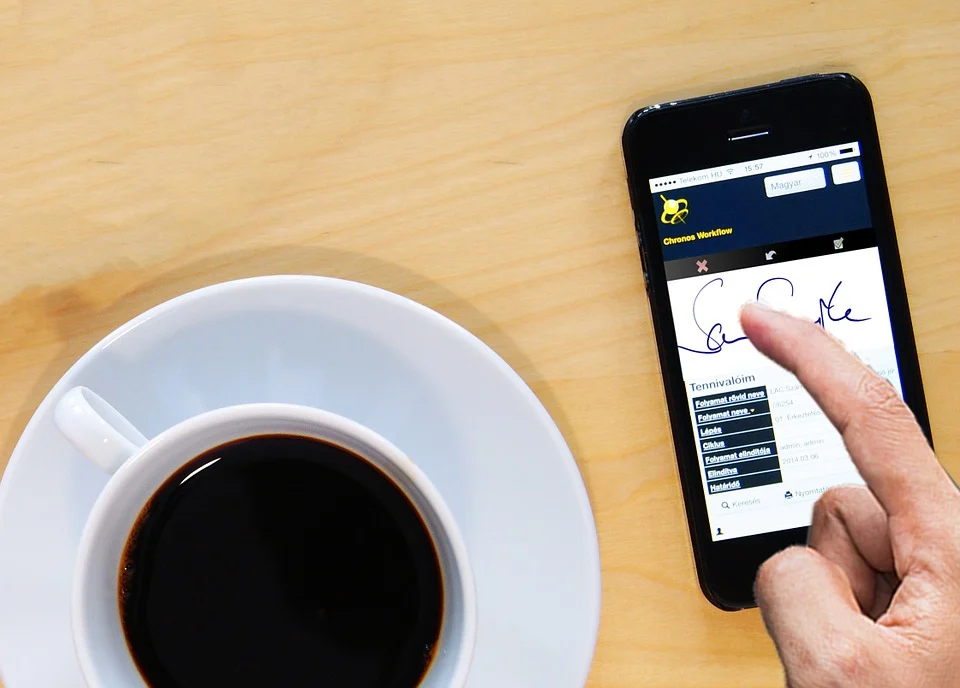
Checking that Electronic Signature
Published on October 17, 2016 by Selwyn Black
The recent case of Williams Group Australia Pty Ltd v Crocker [2016] NSWCA 265 highlights the continued problems of using signatures – whether those signatures are applied by hand or electronically.
The Key Facts
- Williams Group Australia Pty Ltd (Williams) is a supplier of building materials.
- Crocker, Brooks and Walsh were directors of both Image Designed Homes Pty Ltd (Image) and IDH Modular Pty Ltd (Modular).
- In 2010, Williams approved a credit application by Image, supported by an all-moneys guarantee signed by each director. That application was faxed to Williams. Williams supplied materials on credit to Image.
- In May 2012, Brooks set up a “HelloFax” electronic signature system. The system allowed the directors of Image and Modular to sign documents electronically by uploading their signature which could then be applied to documents. Brooks provided an email user ID and password to Crocker to access the system. Crocker did not change that password.
- On 26 June 2012, Crocker logged into HelloFax, uploaded his signature, and applied his signature to a credit application and guarantee in respect of a third party supplier.
- On 2 July 2012, an unknown person using HelloFax applied Crocker’s electronic signature to an application by Modular with Williams for credit. Crocker’s signature was applied to an all-moneys guarantee accompanying the application. The applied signature was not one that Crocker had uploaded to HelloFax.
- That application was faxed to Williams and had the electronically affixed signatures of each director of IDH in their capacity of director and in their capacity as guarantors.
- It was not disputed that at that time, HelloFax would:
(a) send an email notification to a person when their signature was required on a document;
(b) there would be a follow up email 3 days later, and again 7 days later if the request was not complied with;
(c) when the request was complied with an email would be sent confirming the completion of the document; - There was no evidence of any such emails being sent to Mr Crocker.
- HelloFax listed documentation which had been completed through the use of the system.
- Williams approved the credit application by Modular. Williams supplied materials on credit to Modular.
- Modular did not pay its debts to Williams. Williams commenced proceedings against Modular and each director as guarantors. Modular went into liquidation.
- Williams obtained summary judgment against Brooks and Walsh. Crocker resisted the claim on the basis his electronic signature was placed on the guarantee by an unknown person without his authority.
The primary judge’s decision
- The primary judge dismissed the claim against Crocker on the basis that:
(a) (Actual Authority) Crocker had not given his authority to any other person to place his signature on the guarantee;
(b) (Ostensible Authority) there was no assumption by Williams that another person was authorised to place Crocker’s signature on the guarantee and Williams had not acted on that assumption;
(c) (Ratification) Crocker did not ratify the placing of his signature on the guarantee as he was not put on notice that he had been personally committed to it.
Issues before the Court of Appeal
- Williams challenged the primary judge’s findings on the questions of Ostensible Authority and Ratification.
- Williams argued whoever affixed Crocker’s signature to the guarantee had Ostensible Authority to do so because:
(a) Modular had an organisational structure in which it held out to trade creditors that electronically signed documents have been authorised by the relevant signatories;
(b) this structure included:
(i) the HelloFax system;
(ii) Crocker failing to change his password and ID; and
(iii) Crocker’s uploading of his electronic signature;
(c) Crocker had signed the 2010 Image application and guarantee and permitted an officer of Image to deliver those documents to Williams by fax;
(d) it was reasonable for Williams to rely on the electronic signature of Crocker;
(e) Crocker didn’t take proper safeguards against misrepresentation in that he did not change his password; and
(f) Crocker represented the signature was authorised by permitting another person to affix his signature in a context in which he had not changed his password. - In relation to Ratification, Williams argued Crocker ratified the placing of his signature on the guarantee because:
(a) Crocker had been sent:an email asking him to sign the application and guarantee;
(i) an email telling him it had been signed;
(ii) it was not necessary for Crocker actually read the email, open the attachment, absorb its contents and make himself aware of the key terms for him
(b) to be on notice of the guarantee;
(c) Crocker had closed his eyes to the obvious that his signature had been applied to the guarantee.
Decision of the Court of Appeal
- The court rejected the claim that Crocker’s signature had been affixed with Ostensible Authority:
(a) it was necessary for Crocker to have held out to Williams that whoever placed his electronic signature on the relevant documents was authorised by him to do so;
(b) Crocker was just a participant in the HelloFax system – his use of it did not:
(i) authorise some other person to affix his signature to documents;
(ii) represent to Williams that his signature was authorised;
(c) Crocker in not changing his HelloFax password did not represent to Williams that his signature was authorised;
(d) Williams did not know that the Modular documents had been signed by HelloFax – it could not have relied on the HelloFax system being a representation that Crocker had approved the placement of his signature;
(e) there may have been a representation by Modular to Williams that Crocker had signed with authority, but that is not the required representation. - The court rejected the claim that Crocker had Ratified his signature:
(a) the court confirmed the test is whether Crocker had full knowledge of all the material circumstances;
(b) this required more than Crocker receiving an email with an attachment that merely listed the Williams application – there is nothing on the face of (c) that document which would indicate Crocker had signed any guarantee;
(c) Crocker did not shut his eyes to the truth – the HelloFax system would not have shown Crocker a reference to a guarantee;
(d) the fact that other trade creditors had required guarantees in the past did not make Crocker aware there was a requirement on this occasion.
Conclusion
The case emphasises the need to ensure, particularly in the context of relying on personal guarantees, that documents have been properly and formally completed. In retrospect, Williams could have taken extra precautions to confirm Crocker had signed the guarantee such as by directly sending a copy of the guarantee purportedly signed by him for his records or by requiring the guarantors to sign using a personal cryptographic (digital) signature.
For further information, contact
